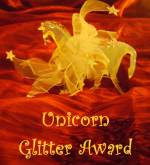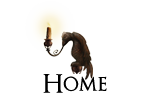"Why does an author go to a bookfair?"
It's a fair enough query, and I tried to answer it in my last Awfully Big Blog Adventure post, where you can see the film I made of Bologna Book Fair.
I made another film, this time of London Book Fair, which you can watch below.
- @balirai wanted the panel to happen because his argument is that young people need to be involved in the industry debate.
- The panel said that:young people are not represented realistically - maybe because authors aren't in touch with their own inner child/teen.
- Hoodies are misrepresented by the press. The panel asked: “What do the media think teens are going to do?” Stereotypes are all wrong & don't represent real kids. Real kids are not as brave & emotionally strong as kids in books. Books don't represent the world real see every day.
- On Twilight: they found Bella Swan's passivity insulting. They don't like the way authors focus on small issues. They find it can make a book a bit narrow & one track minded. They want more diversity & a wider focus.
- Authors weren't always 40 (*clearly this age counts as ‘really old!). So why can't we tap into our own teen experiences? We need to treat teens as real, and to get into teenage head – we need to immerse our authorselves in their culture, music etc, ask them what matters, talk to them, show work to teens for feedback.
- Voice: how can it be more authentic? Kids text in slang. YA authors have to ‘get’ how teen lingo works.Best way to get genuine teen voice is to listen. Create a writing exercise in schools? Keep current on slang. Doesn't matter if slang dates. If you love books just makes it more authentic & places it in period. eg: Small Island by Andrea Levy.
- The panel considered that you stop being 'a child' when you go to secondary school. YA is a transitional phase where you start building yourself & going forward into adulthood. Maturity depends on mindset. The older ones in the panel found they appreciated teen books more at 15 than 12 – they said that there is a gap in middle where something is missing from their reading choice. “It’s a weird age” where younger teens can feel overconfident when looking back as older teen. Don't underestimate 12-15 year olds though, as it’s the age where they feel most patronised by adults.
- Panel were asked whether teens want to read about teens or older characters? They said they were fine with both – and can relate to either. Older characters can be interesting, though.
- Parents can be influential in teen reading choices. Teen characters in books can also help YA readers feel 'normal' by exploring shared experience.
- The debate on boys and reading was split. Some said that boys 'don't get what reading means'. But the opposing view is that boys do get it, but are more 'under the radar'. @balirai says boys are closet readers because it's not seen as cool.
- Teens panel were adamant that authors should ignore the ‘gatekeepers’ on sex and swearing in books. Authors should “tell it how it is”. Teens “know it all anyway” & prefer reality to sanitised versions. However, But issues like domestic violence etc should be treated responsibly by authors. Issues shouldn't be avoided, but they should be discussed in a way that shows wrong from right.
- Non-fiction: the panel said it was less likely to be read (by them at least) because teens don't feel it's aimed at them, or publicised to them. Not interesting.
- Reality vs fantasy novels? Doesn't matter. It's about stepping into someone else's shoes. The act of really getting into someone else's head and being ‘taken away from their own lives’ is what attracts them.
- Teens access books through libraries, friend recommendations and Amazon. If title/blurb is good enough, they will read the book ie Killing God by Kevin Brooks. They said covers were less important to them.
For that seminar alone it was worth going, not to mention the parties, the tweetups, the serendipitous encounters and the Bologna follow-up meeting I had (which I can't talk about, but which I hope will turn into something exciting in due course). Finally there was Nicolette Jones interviewing Patrick Ness, the Wednesday Author of the Day. I filmed the whole thing, and will start putting it up on SCC (in manageable short segments) later on this week, I hope, so do come back and visit.















.jpg)


.jpg)








